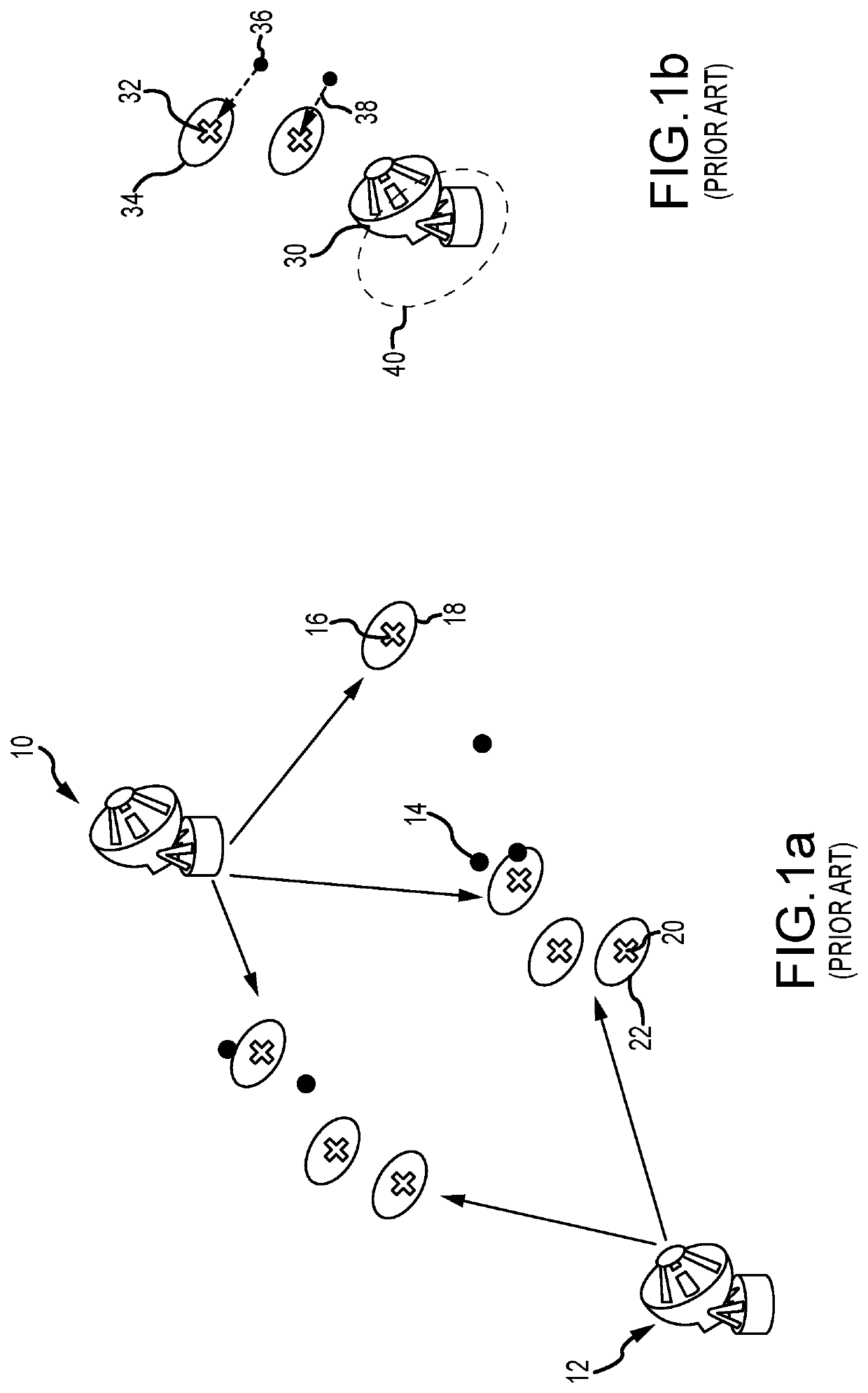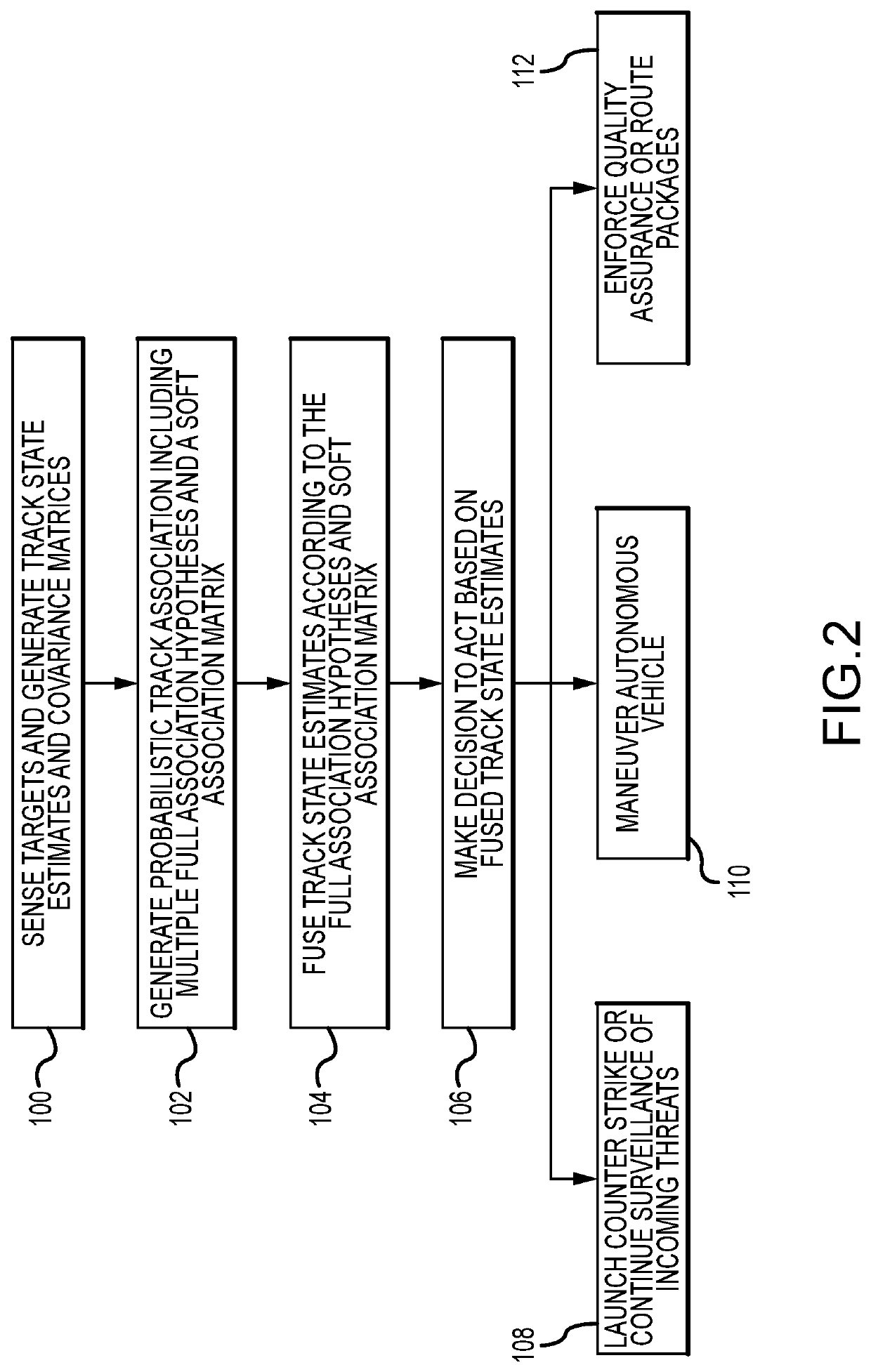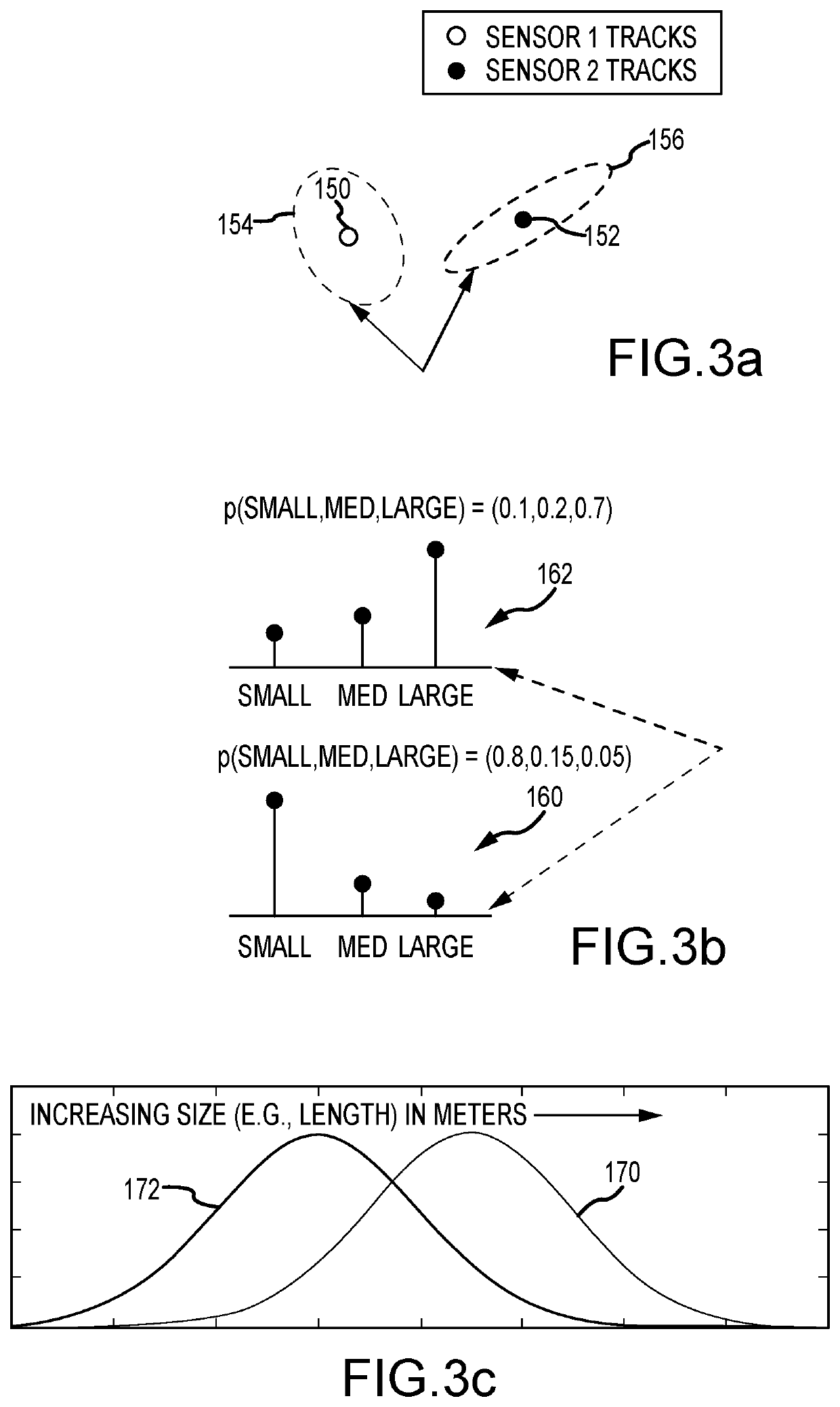Probabilistic Sampling Method For Track Association
a sampling method and track technology, applied in the field of probable sampling method for track association, can solve the problems of weak observation, inability to truly perform pattern matching, and complicated association problems of relative sensor bias error, so as to achieve quick generation, improve efficiency, and enhance efficiency
- Summary
- Abstract
- Description
- Claims
- Application Information
AI Technical Summary
Benefits of technology
Problems solved by technology
Method used
Image
Examples
Embodiment Construction
[0028]As previously described, known techniques for track association use a deterministic approach to identify the single most likely association, which is assumed to be correct and forwarded to the fuser to fuse the sensors' track state estimates. These known approaches are unable to characterize the relative amount of uncertainty in the target scene, regardless of the method (MAP, Marginalized) for calculating the cost of assignment.
[0029]By contrast, the current technique employs a probabilistic sampling to identify and build a plurality of the likely association hypotheses that approximate the solution space and a soft association matrix. The soft association matrix is a posterior estimate of the full probability density function. This density function communicates information about track pairs in the scene that can be unambiguously associated, and regions of the scene that may be densely populated with true tracks and thus confused. The output of the sampler is useful to commun...
PUM
 Login to View More
Login to View More Abstract
Description
Claims
Application Information
 Login to View More
Login to View More - R&D
- Intellectual Property
- Life Sciences
- Materials
- Tech Scout
- Unparalleled Data Quality
- Higher Quality Content
- 60% Fewer Hallucinations
Browse by: Latest US Patents, China's latest patents, Technical Efficacy Thesaurus, Application Domain, Technology Topic, Popular Technical Reports.
© 2025 PatSnap. All rights reserved.Legal|Privacy policy|Modern Slavery Act Transparency Statement|Sitemap|About US| Contact US: help@patsnap.com



